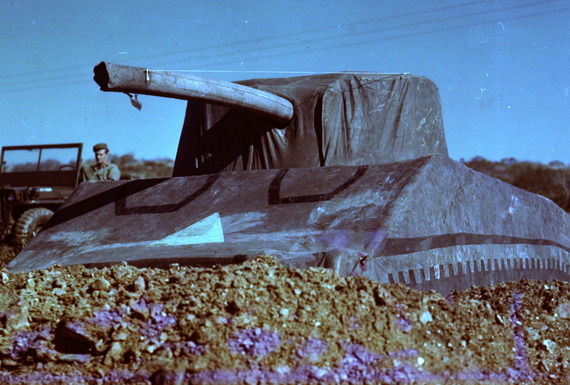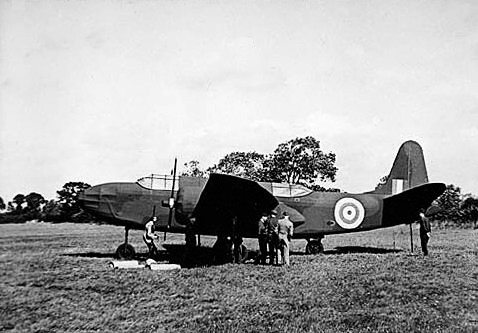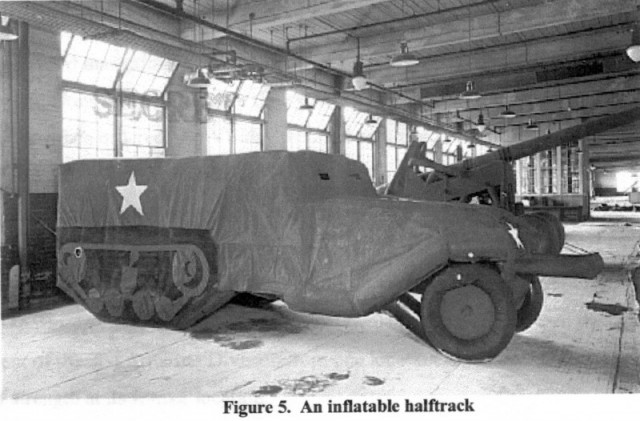Achieving one’s goals in the most important thing in war and all means have been used to do so during WWII. Trickery, planned hoaxes, deceit, making use of double’s or simply feigning the willingness to surrender are all used at some point during the war. We take a look at 4 of these hoaxes.
1 Operation Fortitude
Operation Fortitude was the code name for a World War II military deception employed by the Allied nations as part of an overall deception strategy during the build-up to the 1944 Normandy landings. Fortitude was divided into two sub-plans, North and South, with the aim of misleading the German high command as to the location of the imminent invasion.
Both Fortitude plans involved the creation of fake field armies (based in Edinburgh and the south of England) which threatened Norway (Fortitude North) and Pas de Calais (Fortitude South). The operation was intended to divert Axis attention away from Normandy and, after the invasion on June 6, 1944, to delay reinforcement by convincing the Germans that the landings were purely a diversionary attack.
Fortitude North was designed to mislead the Germans into expecting an invasion of Norway. By threatening any weakened Norwegian defence the Allies hoped to prevent or delay reinforcement of France following the Normandy invasion. The plan involved simulating a buildup of forces in northern England and political contact with Sweden.
During a similar operation in 1943, Operation Cockade, a fictional field army (British Fourth Army) had been created, headquartered in Edinburgh Castle. It was decided to continue to use the same force during Fortitude. Unlike its Southern counterpart the deception relied primarily on “Special Means” and fake radio traffic, since it was judged unlikely that German reconnaissance planes could reach Scotland unintercepted.False information about the arrival of troops in the area were reported by double agents Mutt and Jeff, who had surrendered following their 1941 landing in the Moray Firth, whilst the British media cooperated by broadcasting fake information, such as football scores or wedding announcements, to nonexistent troops. Fortitude North was so successful that by late spring 1944, Hitler had thirteen army divisions in Norway.
In the early spring of 1944 British commandos attacked targets in Norway to simulate preparations for invasion. They destroyed industrial targets, such as shipping and power infrastructure, as well as military outposts. This coincided with an increase in naval activity in the northern seas, and political pressure on neutral Sweden.
Fortitude South employed similar deception in the south of England, threatening an invasion at Pas de Calais by the fictional 1st U.S. Army Group (FUSAG). France was the crux of the Bodyguard plan; as the most logical choice for an invasion the Allied high command had to mislead the German defences in a very small geographical area. The Pas de Calais offered a number of advantages over the chosen invasion site, such as the shortest crossing of the English Channel and the quickest route into Germany. As a result German command, particularly Rommel, took steps to heavily fortify that area of coastline. The Allies decided to amplify this belief of a Calais landing.
Montgomery, commanding the Allied landing forces, knew that the crucial aspect of any invasion was the ability to enlarge a beachhead into a full front. He also had only limited divisions at his command, 37 compared to around 60 German formations. Fortitude South’s main aims were to give the impression of a much larger invasion force (the FUSAG) in the South-East of England, to achieve tactical surprise in the Normandy landings and, once the invasion had occurred, to mislead the Germans into thinking it a diversionary tactic with Calais the real objective
2 Operation Mincemeat
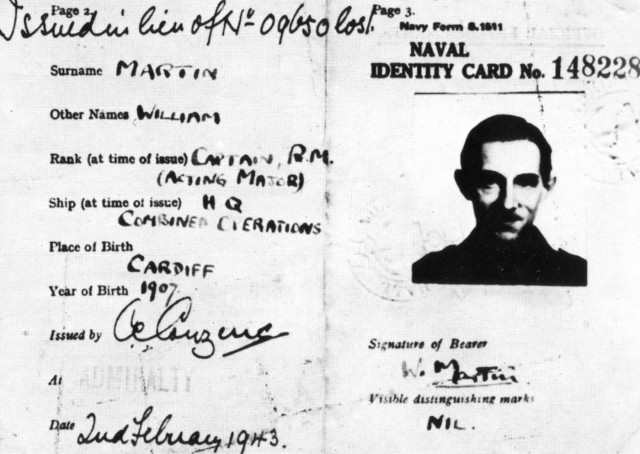
This was an operation used by the British during WW2 to trick the Germans that the Allied attack on Europe would take place at Sardinia, yet the planned attack would be at Sicily. The British intelligence thus created a `Major Martin`, whom they would use as a decoy in order to catch the Germans off-guard.
The British started by looking for a soldier who had died of pneumonia so that if the Germans decided to conduct an autopsy and it would prove that the victim had drowned. They would then bury the phony `Major Martin` at sea off the Spanish Coast, and top-secret documents were put in his clothes. Additionally, he was supplied with a complete background to ensure that his cover would not be blown.
For instance, a wallet containing a photo of his supposed fiancée was put in one of his pockets. This plan was executed in 30th April 1943 during the wee hours of the morning and by late afternoon that day the corpse of `Major Martin` was found by Spanish fishermen.
One of the documents was a personal letter sent and signed by Lord Mountbatten and it stated, “Let me have him [Martin] back, please, as soon as the assault is over. He might bring some sardines with him; they are on points here!” This was a brilliant trick meant to mislead the Germans that the Allied attack would take place on Sardinia.
The body of the phony `Major Martin` was sent back, and on 2nd May and he was given a Major`s burial. As a matter of fact, there was even an obituary notice of him in the London Times.
When the British learnt that the plan had worked and the Germans had begun deploying massive reinforcements to Sardinia, they attacked Sicily and they won the battle without much resistance.
It is important to note that the British first obtained permission from the dead soldier’s relatives before they could use him for the mission. The relatives agreed, but with only one condition; the real identity of the soldier should never be revealed.
3 General Bernard Montgomery`s Double
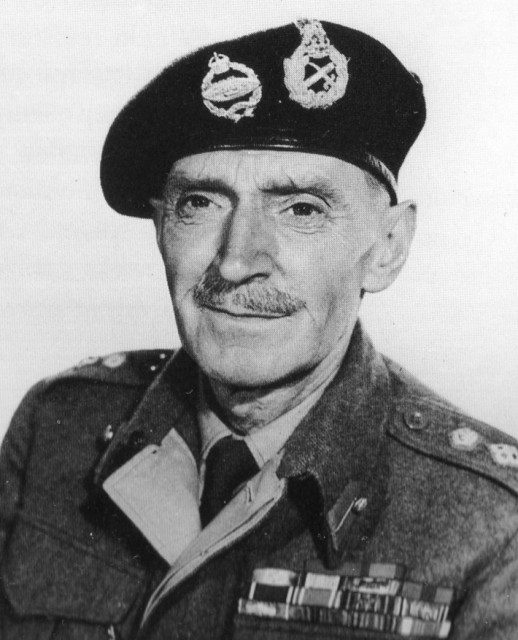
During WW2, a soldier who also doubled up as an actor impressed his fellow soldiers with his perfect impressions of General Bernard Montgomery. His name was Meyrick Clifton James and he was thus chosen for a decoy mission meant to trick the Germans so that they could divert their troops. On the eve of the Allied invasion to Normandy, James Clifton was sent as a decoy Gibraltar. He met Governor, Lieutenant-General Sir Ralph Rusty” Eastwood and a German spy known as Ignacio Molina Pérez and he immediately recognized him as General Monty.
The German spy sent out word to the German Commander, who immediately diverted troops away from Normandy to the Mediterranean where the fake General Monty was. Unknown to the Germans, the real General Monty was planning a big attack on Normandy and on the day of the attack the Allies triumphed.
The story of Meyrick Clifton James was made into a film titled `I Was Monty’s Double`. Meyrick Clifton died in 1963, and his contribution to the war will never be forgotten. He was a brave man who used his talent to outwit the enemy and give his side the upper hand during battle.
4 Japan was willing to surrender during the last months of WW2
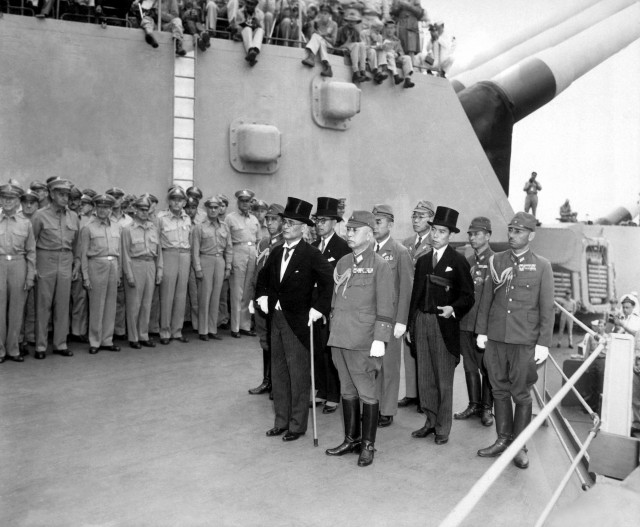
Most people believe it to be true, but there is a higher likelihood that it was a hoax used by the US and its Allies to humiliate Japan. It is believed that during the last summer of World War II, Japan was willing to negotiate for peace. As a matter of fact, the Americans had intercepted a message from the Japanese foreign office attempting to negotiate a deal with the Soviets, which would have ensured peace for everyone. Their conditions for peace were:
- They are allowed to retain the empire they had before the war
- Their imperial system including the Emperor should not be interfered with
The United States rejected the deal, because they wanted to crash the Japanese in the meanest way. They were also looking for a reason to hit the Japanese with Atomic bombs, not because they could not win the war under actual combat but because they wanted to reveal their real power to the Soviets. This is mainly because the two Nations were emerging as the biggest super powers in the world, and the fact is there could only be one.
The fact that the Japanese were willing to surrender is a hoax; the desire for peace and the willingness to surrender are two different arguments. The real fact is that the Japanese were willing to negotiate for peace, as long as their conditions were met.
